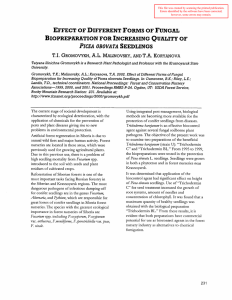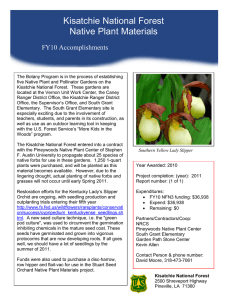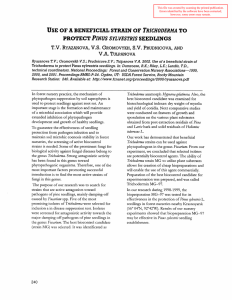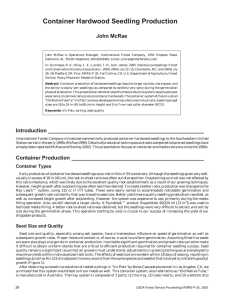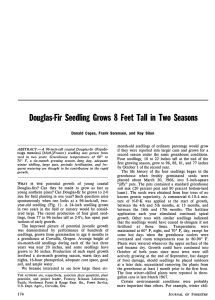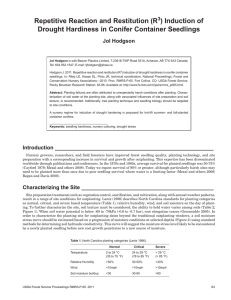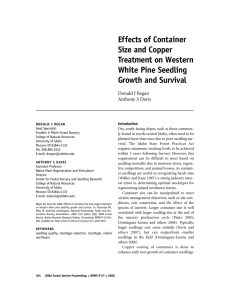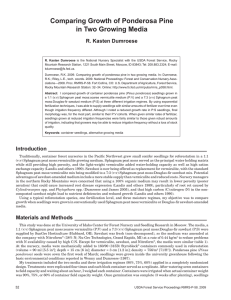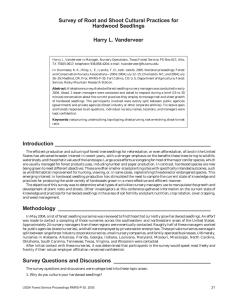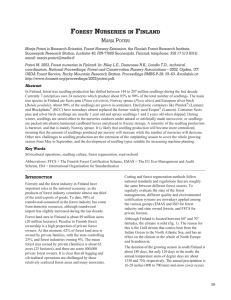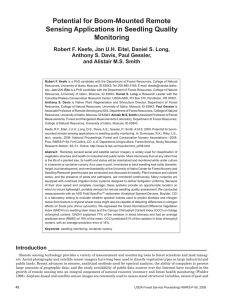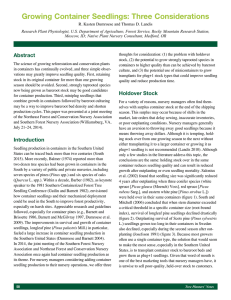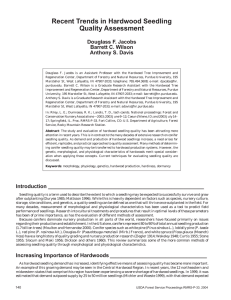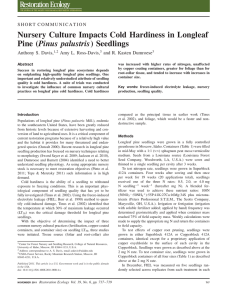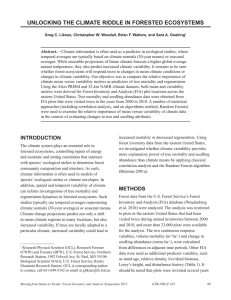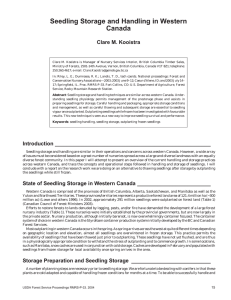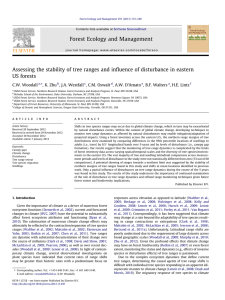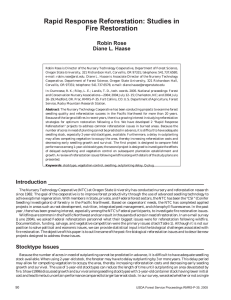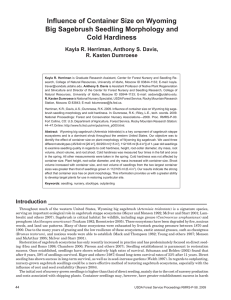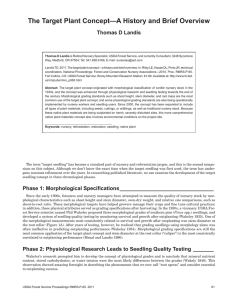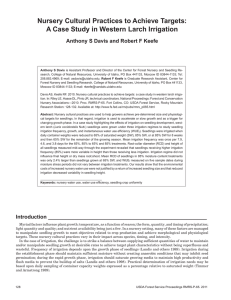Document 11872763
advertisement
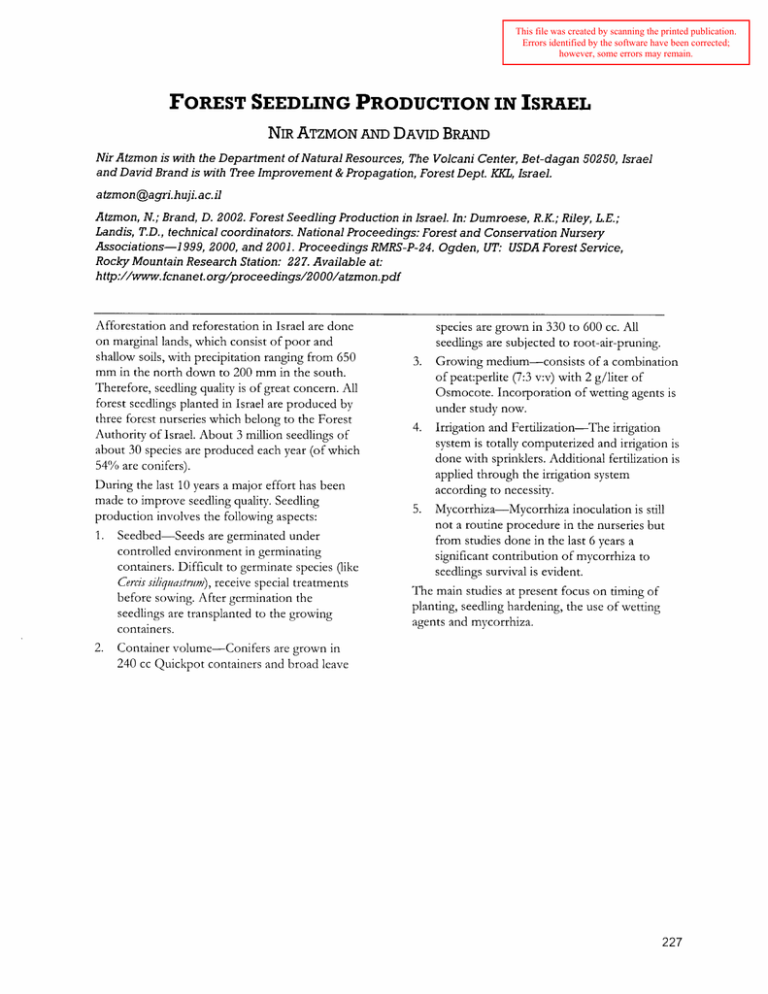
This file was created by scanning the printed publication. Errors identified by the software have been corrected; however, some errors may remain. NIRATZMON AND DAVIDBRAND Nir Atzmon is with the Department of Natural Resources, The Volcani Center, Bet-dagan 50250, Israel and David Brand is with Tree Improvement & Propagation, Forest Dept. Kk=L, Israel. a tzmon@agri.huji.ac.il Atzmon, N.; Brand, D. 2002. Forest Seedling Production in Israel. In: Dumroese, R. K.; Riley, L.E.; Landis, T.D., technical coordinators. National Proceedings: Forest and Conservation Nursery Associations-1 999,2000, and 2001. Proceedings RMRS-P-24. Ogden, UT: USDA Forest Service, Rocky Mountain Research Station: 227. Available at: h t tp://www.fcnanet.org/proceedings/2000/a tzmon.pdf Afforestation and reforestation in Israel are done on marginal lands, which consist of poor and shallow soils, with precipitation ranging from 650 mm in the north down to 200 mm in the south. Therefore, seedling quality is of great concern. All forest seedlings planted in Israel are produced by three forest nurseries which belong to the Forest Authority of Israel. About 3 million seedlings of about 30 species are produced each year (of which are conifers). During the last 10 years a major effort has been made to improve seedling quality. Seedling production involves the following aspects: 1. Seedbed-Seeds are germinated under controlled environment in germinating containers. Difficult to germinate species (like Cercis siIiqzmstnmr), receive special treatments before sowing. After germination the seedlings are transplanted to the growing containers. 2. Container volume-Conifers are grown in 240 cc Quickpot containers and broad leave ll species are grown in 330 to 600 cc. A seedlings are subjected to root-air-pruning. 3. Growing medium-consists of a combination of peat:perlite (7:3 v:v) with 2 g/liter of Osmocote. Incorporation of wetting agents is under study now. 4. Irrigation and Fertilization-The irrigation system is totally computerized and irrigation is done with sprinklers. Additional fertilization is applied through the irrigation system according to necessity. 5. Mycorrhiza-Mycorrhiza inoculation is still not a routine procedure in the nurseries but from studies done in the last 6 years a significant contribution of mycorrhiza to seedlings survival is evident. The main studies at present focus on timing of planting, seedling hardening, the use of wetting agents and mycorrhiza.

